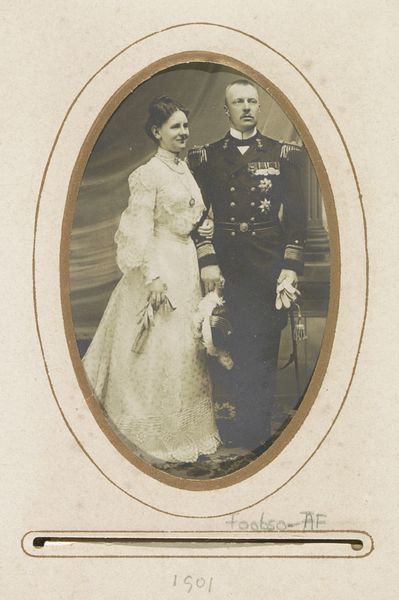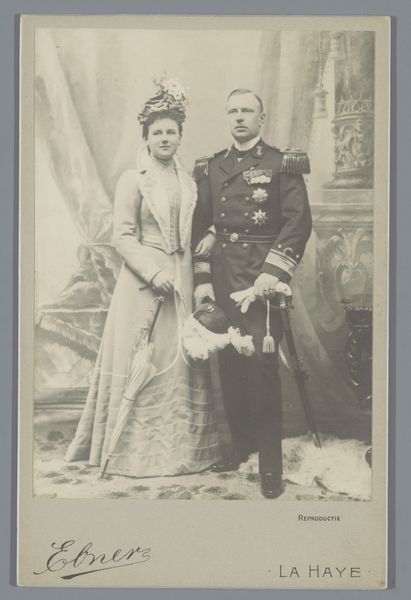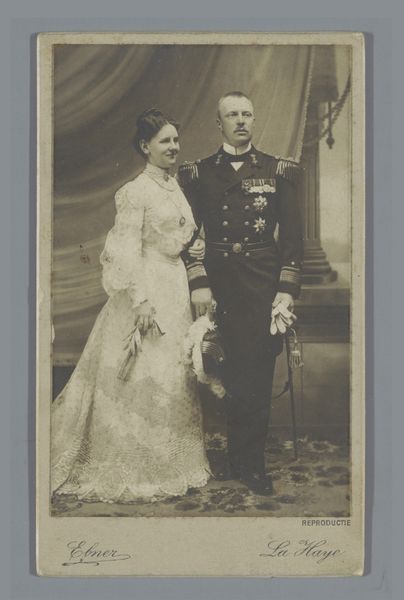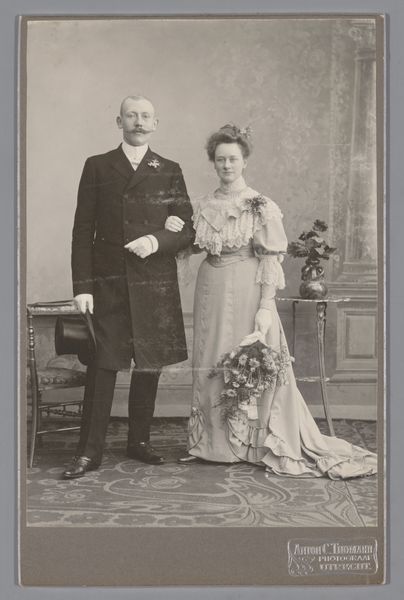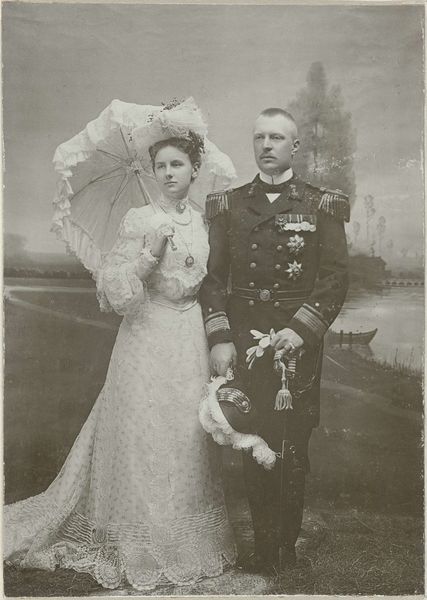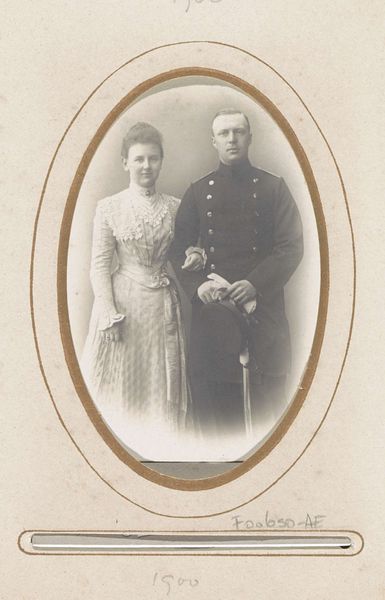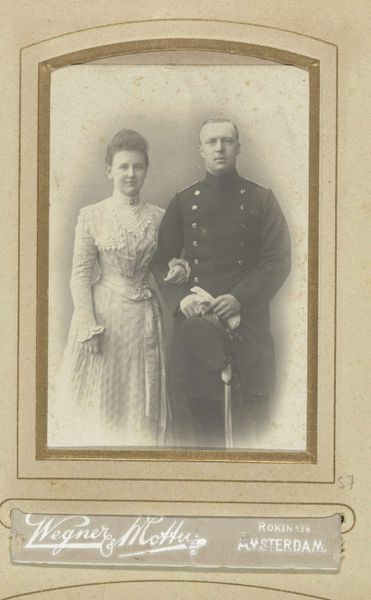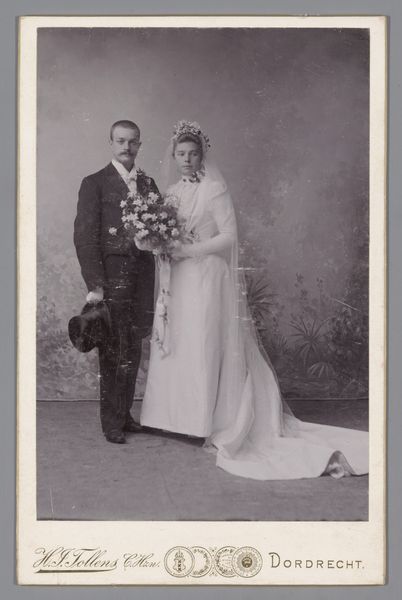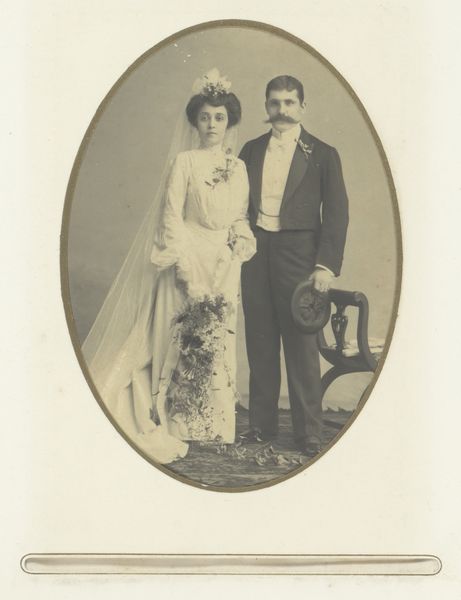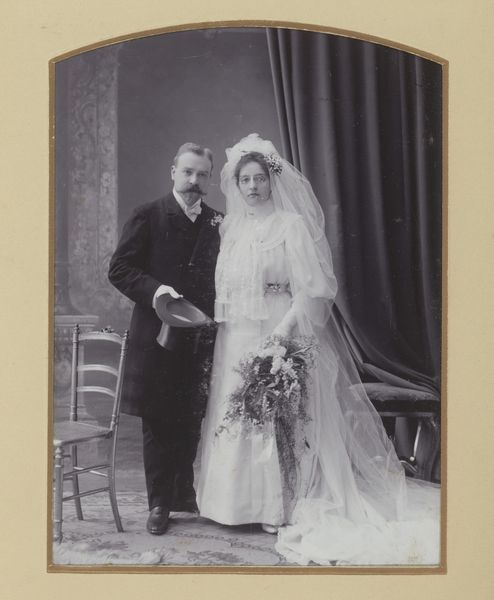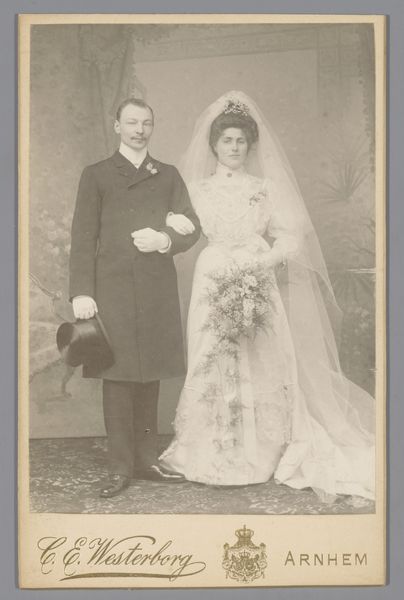
Portret van koningin Wilhelmina met parasol en prins Hendrik in uniform van schout-bij-nacht 1901
0:00
0:00
photography
#
portrait
#
archive photography
#
photography
#
historical photography
#
19th century
#
history-painting
Dimensions: height 104 mm, width 62 mm
Copyright: Rijks Museum: Open Domain
Curator: Here we have a photographic portrait dating back to 1901. The photograph features Queen Wilhelmina alongside Prince Hendrik, created by Ferdinand Robert Ebner. Editor: The stark formality immediately strikes me. There’s a somber mood, heightened by the sepia tones and the subjects' rigid poses. It feels very controlled, very posed. Curator: Well, consider the political climate and social expectations of the time. The Royal family's image was meticulously crafted, so control was paramount. This photograph was instrumental in constructing the Royal Family’s identity. It captures Wilhelmina early in her reign alongside her husband and strategically conveys an image of stability and power. The rigid pose can be seen as representing power through formality. Editor: Absolutely, but I wonder how Wilhelmina herself experienced that pressure to conform. The parasol she’s holding – is it merely an accessory, or a shield? I’m always looking for signs of resistance, subversion, even unconscious rebellion. It makes you wonder whether the prince standing tall with medals could understand what a challenge his wife faced as a woman, as the reigning monarch, as the symbol of power. How might those systems intersect and collide within this single image? Curator: Indeed, the semiotics of royal portraiture offer fascinating avenues for interpretation, revealing societal ideals and power dynamics. Consider how the circulation of images such as this helped to define Dutch national identity and strengthen the monarchy's public image. This was, in its time, a tool of nation building. Editor: Absolutely, and thinking about audiences then and now, does the performative nature of such portraits ever risk undermining the credibility they aim to establish? The context is different for viewers now and what was supposed to establish power in 1901 could signal stuffiness, perhaps? Curator: Perhaps. These royal portraits often serve as valuable primary sources, offering unique insights into a pivotal era of societal transformation. What strikes me most is the photograph’s power, whether positive or negative, in establishing and reflecting national values. Editor: And for me, the quiet resistance to that power subtly etched in the eyes of its subjects. Both, I think, shape how we interpret and question history through art.
Comments
No comments
Be the first to comment and join the conversation on the ultimate creative platform.

